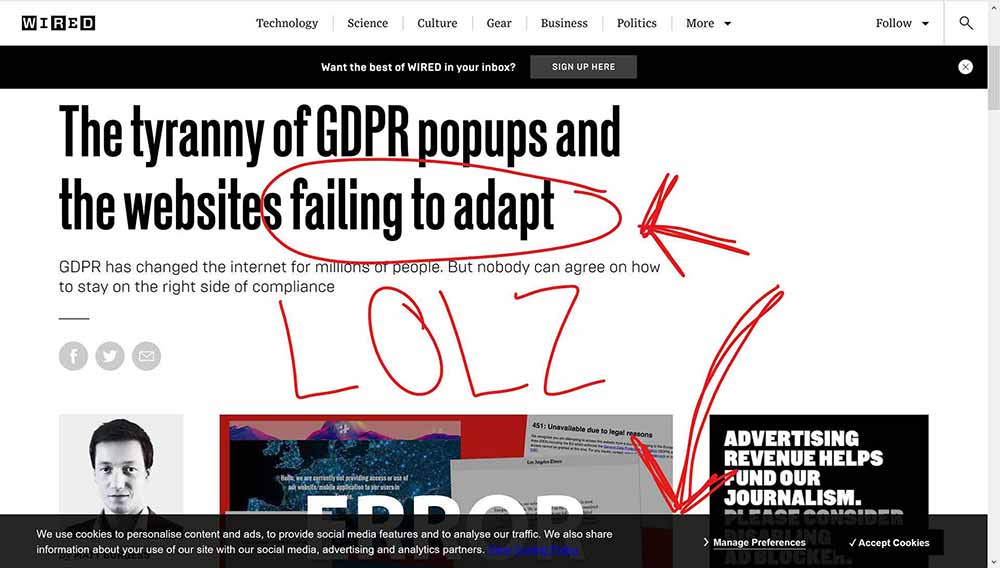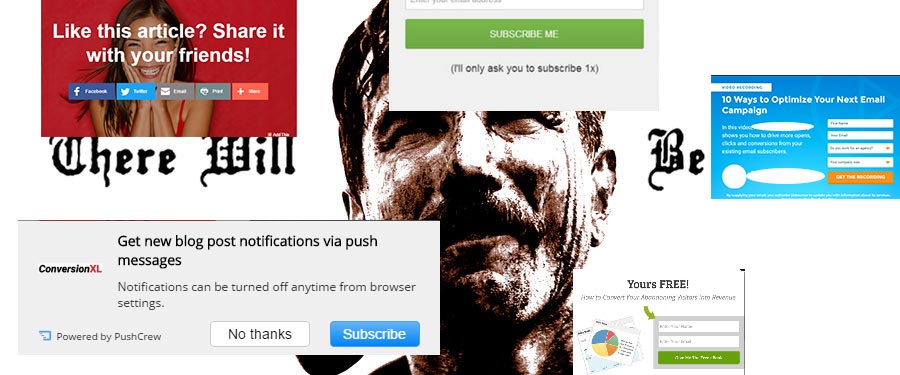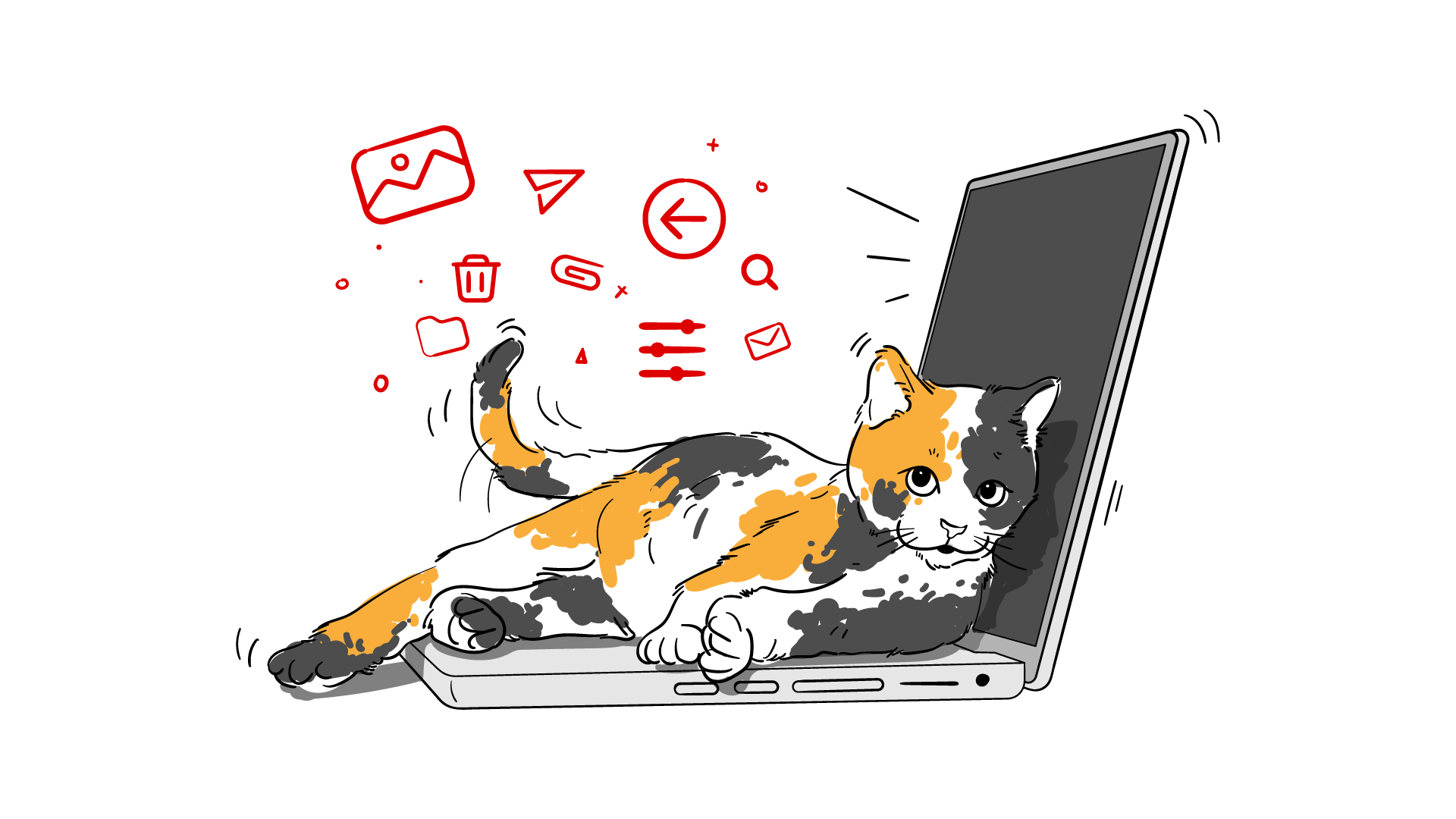Forbes used to be one of the world’s most prestigious magazines.
Over the 2000’s, as people slowly turned to the internet to get their news and magazines, Forbes transitioned into becoming one of the most respected online media publishers. They were known for publishing thoroughly-sourced, quality articles from actual journalists.
Flash forward to today, and Forbes is one of the biggest laughing stocks in the media world.
What happened? Where did they go wrong?
- They watered down their brand. They went from publishing quality articles about business and politics to nauseating Game of Thrones recaps and Fortnite listicles.
- They prioritized profit over user experience. They splattered an insane amount of crappy ads all over their site in the pursuit of a quick buck, and went as far as to block their content from people who refused to view them.
Forbes destroyed their user experience, and their users fled in the other direction.
Let’s take a deeper look into why user experience in web design is so important, and how you can avoid becoming the next Forbes.
- What is User Experience?
- Why is User Experience so important?
- How can I improve my website’s User Experience?

What User Experience means for web design
User experience (or UX), in the broader sense of the term, is pretty self-explanatory. It is the experience a visitor/user/customer has when using your product/service/tool.
When it comes to web design, we will be discussing the experience a user has when navigating your website.
Web design UX can be broken down and divided into many different categories. From website design to graphic design, video design to performance optimization, user experience should be at the forefront of every single website you build.
It literally means life or death for your website.
“OK, Patrick. We get it. UX is important for web design. Can you tell us why now?” – You, probably.
Sure! Since you asked so nicely…
Why User Experience in web design is so important
Prioritizing user experience in your web design is important because…
Your users demand it
People are fed up with the current state of the internet.
Obnoxious advertisements, aggressive lead capturing, fake news, clickbait, privacy invasion, malicious social media algorithms and much more are adding up to an incredibly frustrating online experience.
And when we try to fix some aspects of this horrible experience, we inadvertently create more.
Have you noticed how we suddenly find ourselves in a cookie-notification-fueled nightmare? Yah, that’s because Europe tried to crack down on all of these privacy-stealing websites by forcing them to tell us when they’re doing it.

And now they’re trying to figure out how to fix that UX problem…
If you engage in anything that negatively affects your users’ experience on your website, you will lose visitors and damage your brand. Possibly even permanently.
Google says so
“Focus on the user and all else will follow.” – Google
Google’s search algorithm is constantly evolving. And with each update, Google continues to place a higher priority on user experience.
Google is way smarter these days. Their ability to match content with a user’s search intent is astonishingly good.
You used to be able to write a 3,000 word epic, stuff it with your favorite keyword, and watch your blog post rise to the top of page #1 over the next couple of months.
Nah, it ain’t like that anymore.
If you really want your content to be featured by Google, you need to design it in a way that satisfies your user’s intent. In other words, answering their search query.
Google tracks certain metrics to determine whether your site is accomplishing this. Things like Bounce Rate, Time on Page, and Click Through Rate are important. If Google sees that most of your visitors are backing out in the first 10 seconds, your search rankings are going to suffer.
So you’re going to have to design a site that keeps people engaged.
Over the next couple of years, you’re going to see a lot more pages incorporating a larger variety of more engaging content. Things like videos, infographics, custom animations, and podcasts will be the new norm.
Your competitors are getting stronger

Website owners are finally starting to catch on to the dramatic shifts in the SEO industry. The top ranking pages are constantly being updated and adjusted to match Google’s latest update.
This means it is harder than ever to get your website to rank at the top.
But with more people and businesses getting online every single day, it also means the reward is greater than ever.
As a web designer, the longer you delay at improving your web design and sales skills, the further behind you fall.
You don’t want to be that guy… do you?
How to improve your website’s User Experience
That’s right. You don’t want to be that guy. So here’s some simple ways you can improve your website’s UX right now:
Start with a clear goal in mind
Before you design a single pixel, you need to know exactly what the goal of the website is. Even more than that, you need to understand the goal of every single individual page.
Designing a new page? What is the goal of that page?
Writing a blog post? What is the goal of that blog post?
Producing a new video? What is the goal of that video?
If you don’t have a clear goal in mind to produce your content, you’re wasting time and money. And your visitors will get lost and leave.
Create an obvious call to action
Once you have that goal in mind, you need to figure how you can drive your visitors to action to achieve that goal. And it needs to be stupid simple.
Calls to action can include:
- Subscribe to an email list
- Submit a request for a quote
- Follow a social media channel
- Comment on a post
- Click through to another page
- Purchase a product
Driving visitors to act on something is hard. And that’s exactly why it’s so profitable when you succeed.
Use more images and video, less words
Our brain processes visuals 60,000x faster than text.
The average American now watches over 5 hours of TV every day.
Those same Americans are still so bored that they actually spend most of that TV-watching time staring at their phones.
All of this is to say… our attention spans are shrinking further every day.
To catch (and keep) people’s attention, you’re going to have to get really good at turning your enticing written sales copy into a powerful visual story.
Less wordiness, more unique images and videos.
Be a human being for goodness sake

Everyone is obsessed with technology and automation taking over our jobs, lives and mental capacities.
All without realizing that their is a growing movement against it.
As the world becomes every more digitally connected, and physically isolated, the craving for genuine human interaction is only going to increase.
Restaurants are banning smartphones.
Coffee shops are disconnecting their wifi.
And businesses that have actual human beings as their customer support are welcoming customers in droves.
Rather than obsessing over how you can implement automation into every aspect of your web design business, look for opportunities to inject some humanity into things that are traditionally automated.
For example, I don’t automate any form of communication with my customers. Every single person who calls, emails, or submits a form on my site receives a unique message from me directly.
Do you know how many people are impressed by this seemingly small gesture? It gets me every time.
Never, under any circumstances, use ads
Oh man, I could write an entire article about how the advertisement alone has caused widespread modern societal collapse.
I’m not even joking. *saves article idea for later*
If you’re trying to monetize anything, and I mean anything, with ads, you’re doing it wrong.
On top of the fact that advertisements are universally loathed, they pay mere pennies compared to selling an actual product or service.
The entire revenue model of ads is (finally) beginning to collapse, burning giant media companies to the ground and sending thousands of social media “influencers” into a panic.
But until they’re gone forever, don’t use them.
Stay far away from aggressive popups

I’ve railed against the dreaded email popup too many times to count.
They’re ugly, your visitors think they suck, and Google hates them.
Don’t use them.
Reduce the size of, and compress, all of your images
A crucial part of a great website UX is loading speed. And one of the biggest things that slows down websites are images that are too large.
Use a tool like Photoshop to reduce the dimensions of and compress your images.
Streamline and simplify your website’s coding
Another aspect of speeding up your website’s loading time is streamlining and simplifying the code.
Depending on how a website is put together, the coding can get bungled up in a way that negatively impacts the loading speed.
Reorganizing it and placing the proper priorities on the right parts can do wonders in terms of performance.
This one can be a bit trickier. So if you don’t know what you’re doing, either install a plugin or hire an actual developer to help you out.
Use a fantastic web hosting service
Your website is hosted on a server, and not all servers were created equal.
Between the quality of the techy side of the server, and the knowledge and expertise of the people who are managing it, the web host you choose can mean the difference between delighting or frustrating your users.
Companies like Bluehost are great for people who are just starting out but, once you gain some real experience and are managing more clients, you’ll want to get a web host who is much smaller and more grounded.
I personally use BigScoots for all of my hosting needs and couldn’t be happier.
Take it easy on the fancy “features”, slick
Yah, that opening animation of the black hole spitting your logo out into the middle of the page is cool alright.
It’s also killing your website’s loading speed.
And that automatic video that plays when people land on your page? It turns out that most of your visitors don’t like it, and are peaceing out before they even see the rest of the page.
This is the part where you have to set your creative ego aside for the greater good. Your user experience trumps all, remember?
It’s not always easy to do. I’ve had some creative projects that I was super proud of, only to find that it was harming the website’s UX in some way. And I had to kill it…
Will you be willing to do the same?
Make something unique
As we discussed earlier, the internet is vying for everyone’s attention. Competition is high, and attention spans are low.
If you’re going to stand out from the crowd, you need to come up with something unique.
Now is not the time to get lazy. Crappy stock photos and boring writing is not gonna cut it.
Tell a story. Use illustrations. Create some custom images. Make an accompanying video or podcast. Do something that makes your content worth people’s time.
User Experience is the beginning, middle and end of the web design process

If all of this is just a little too overwhelming for you, you can distill everything we just discussed into one simple formula:
If it detracts from your user experience in ANY way, don’t do it.
When tweaking your website design this way or that, you need to ensure that you are tracking and measuring the results of your changes. That’s the only way you can know for sure if the change is positively or negatively impacting your website.
You don’t need expensive software to do this. Just setup Google Analytics and you’re good to go.
We’re about to enter a new era of ultra-high-quality content. The competition is on.
As the internet transforms, Google evolves, and websites adapt, it’s going to become ever more challenging to get your website noticed.
Don’t be led astray by the folks who are winning the SEO game right now. The ones who are still using years-old tricks that got them where they are today.
The present and future of web design, and especially SEO, is user experience above all.
It’s time for you to prep your website for this glorious future.





